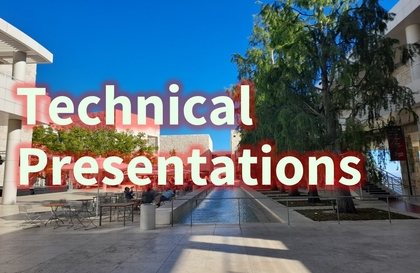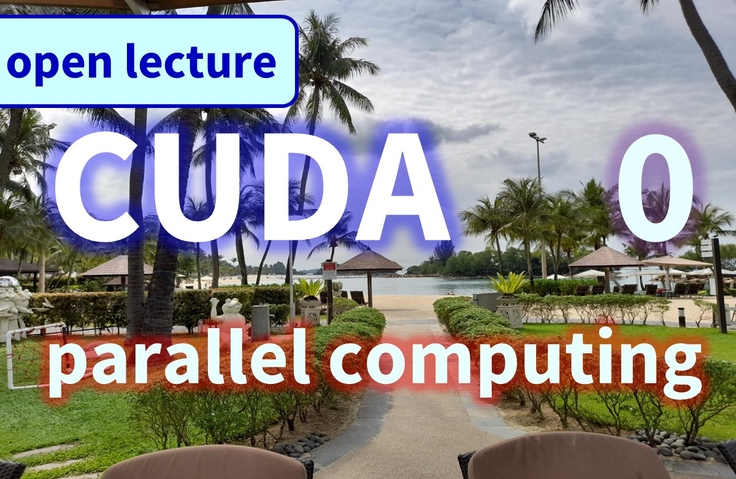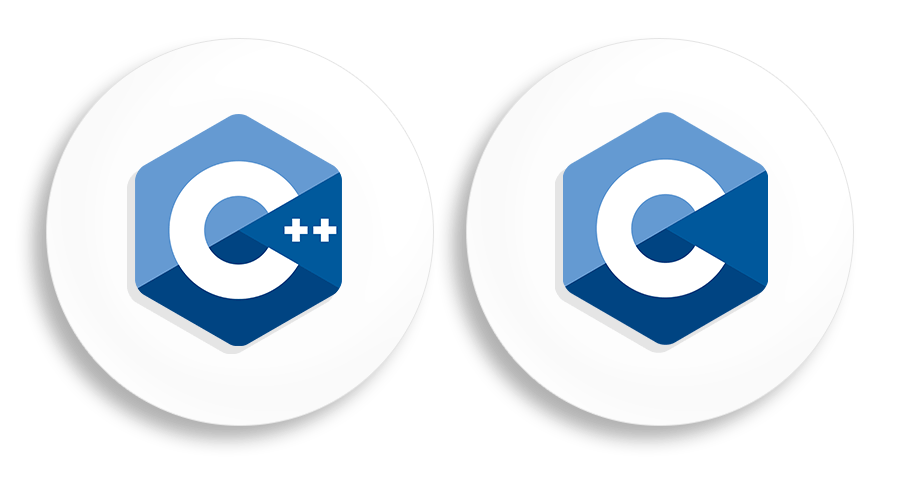
Presentation Tips for Beginners
onemoresipofcoffee
We'll tell you what to do and what not to do when you have to give a technical/business presentation.
Beginner
presentation PT, Tech Interview, audience
✅ This is an introductory lecture (0) that introduces the entire series of lectures (1) to (6). ✅ NVIDIA GPU + CUDA programming is explained step by step from the basics. ✅ It processes arrays/matrices/image processing/statistical processing/sorting, etc. very quickly with parallel computing in C++/C language.

Full Series - Massively Parallel Computing with CUDA on GPUs
This lecture is - Part (0) - Introduction to Massive Parallel Computing and CUDA
Update - June 2023, "Remastered" 🍀 (some audio, intro video)
✅ Bundle Discount Coupon✳️ provided in the roadmap "CUDA Programming"
Speed is everything in a program!
Make it fast with massive parallel processing techniques 🚀

✅ CUDA = The most widely used GPU parallel computing technology
✅ Step by step + abundant examples + detailed explanations = This is the course!
Large-scale parallel computing based on GPUs and graphics cards is actively used in AI, deep learning, big data processing, and image/video/audio processing. Currently, the most widely applied technology in GPU parallel computing is NVIDIA's CUDA architecture.
Among parallel computing technologies, large-scale parallel computing and CUDA are considered crucial. However, it's difficult to find a course that systematically teaches this field, making it difficult to even begin learning. Learn CUDA programming step by step through this course. CUDA and parallel computing require a theoretical background and can be challenging. This course's rich examples and background explanations, along with a thorough understanding of the fundamentals, will give you the tools you need! This course will be produced as a series, ensuring ample lecture time.
This lecture will explain how C++/C programmers can use the CUDA library and C++/C functions to accelerate a wide range of problems using massively parallel processing techniques . This approach can be used to accelerate existing C++/C programs or to dramatically accelerate new algorithms and programs by developing them entirely using parallel computing.
📢 Please check before taking the class!
CUDA and large-scale parallel computing require extensive examples and explanations. This series of lectures covers parts (0) through (6), totaling over 24 hours.
Since it is a computer programming subject, it emphasizes abundant practical training and provides actual working source code so that you can follow along step by step.
During lecture time, we will try to avoid redundant explanations as much as possible for the source code parts that have already been explained, so that you can focus on only the changed parts or the parts that need to be emphasized.

Programmers who want to dramatically improve existing programs

Researchers who want to know how various applications are accelerated

College students who want to add new technologies to their portfolio before getting a job.

Anyone who wants to learn about the theory and practice of parallel processing such as AI, deep learning, and matrix calculations.
*The review below is a review of an external lecture given by a knowledge sharer on the same topic.
"I knew nothing about parallel algorithms or parallel computing,
After taking the course, I feel more confident in parallel computing."
"There were many algorithms that could not be solved with existing C++ programs.
Through this lecture, I was able to improve my ability to process in real time!"
"After attending the lecture, when I was interviewed and said that I had experience with parallel computing, the interviewers were very surprised.
"I heard that it's not easy to find CUDA or parallel computing courses at the college level."
Part 0 (1-hour free lecture) Current lecture
Part 1 (3 hours 40 minutes)
Part 2 (4 hours 15 minutes)
Part 3 (4 hours 5 minutes)
Part 4 (3 hours 45 minutes)
Part 5 (3 hours 55 minutes)
Part 6 (3 hours 45 minutes)

CUDA programming and
Conquering massive parallel computing!
Q. What are the reviews of the paid lectures?
Paid courses are being released sequentially, from (1) to (6), so course reviews are scattered and not yet public. The paid courses currently have the following reviews:
Q. Is this a course that non-majors can also take?
Q. Is there anything I need to prepare before attending the lecture? Are there any notes regarding the course (necessary environment, other considerations, etc.)?
Q. What level of content is covered in the class?
Q. Is there a reason for setting a course deadline?
Q. Are there subtitles in the video?
Who is this course right for?
Those who want to accelerate arrays/matrices/image processing/statistical processing/sorting, etc. with C++C-based parallel computing/parallel processing
Those who want to accelerate their own developed program with parallel computing/CUDA/CUDA
For those who want to study NVIDIA CUDA programming/CUDA computing from the basics
Those who want to study the theory and practice of GPU parallel processing/parallel computing
Need to know before starting?
C++ or C programming experience
Knowledge of computer architecture, registers, caches, time sharing, etc. would be helpful.
9,413
Learners
259
Reviews
64
Answers
4.9
Rating
30
Courses
One more cup of drip coffee for the road
All
15 lectures ∙ (1hr 8min)
Course Materials:
All
52 reviews
4.9
52 reviews
Reviews 25
∙
Average Rating 5.0
5
As someone else wrote in their course review... I'm really grateful that you made this course into Korean.
Hello. Thank you for your good review. I will see you again with more content.
Reviews 2
∙
Average Rating 5.0
Reviews 1
∙
Average Rating 5.0
Reviews 8
∙
Average Rating 5.0
Reviews 1
∙
Average Rating 5.0
Free
Check out other courses by the instructor!
Explore other courses in the same field!